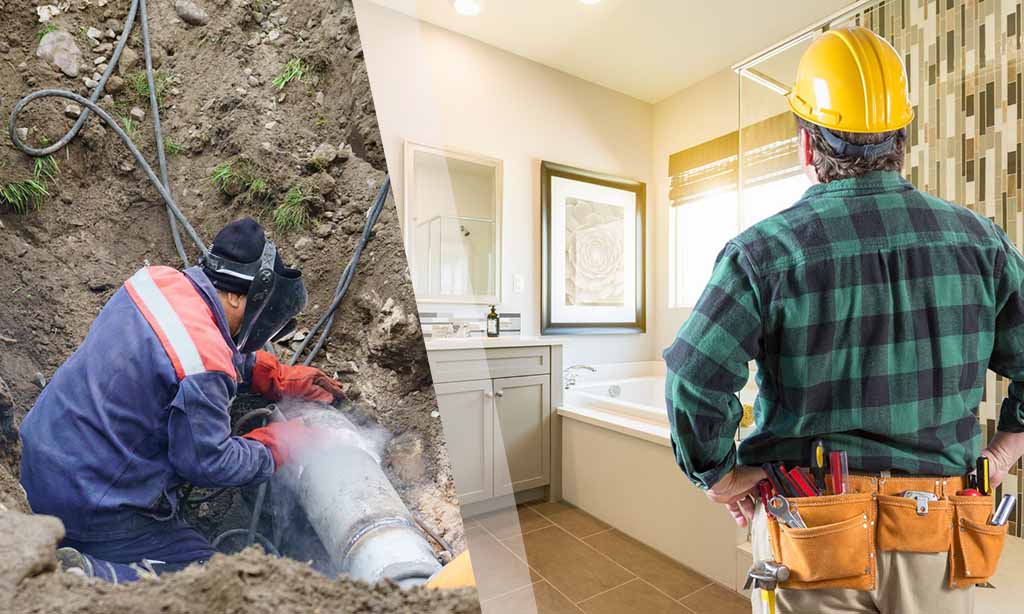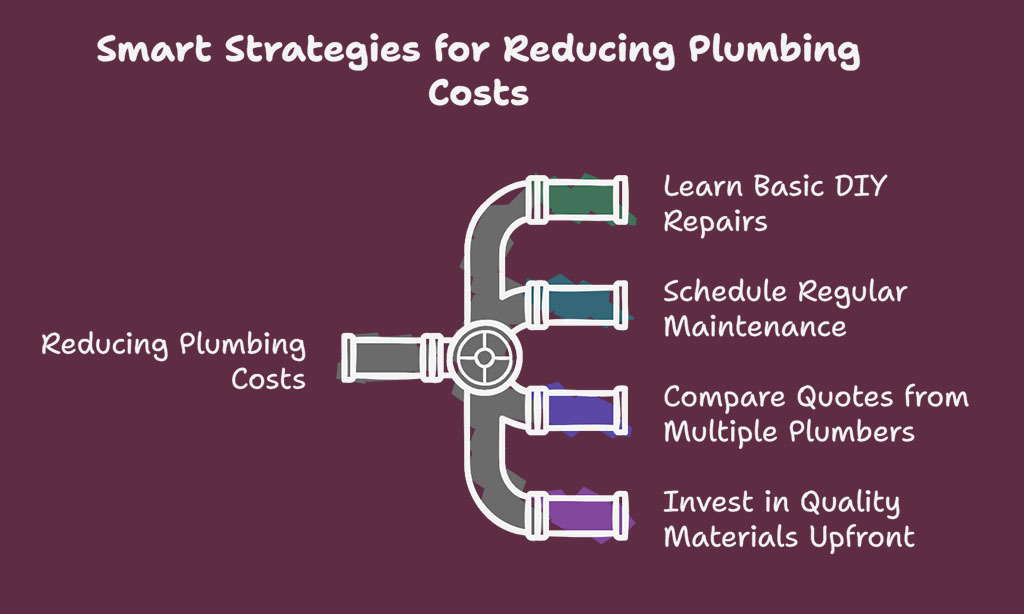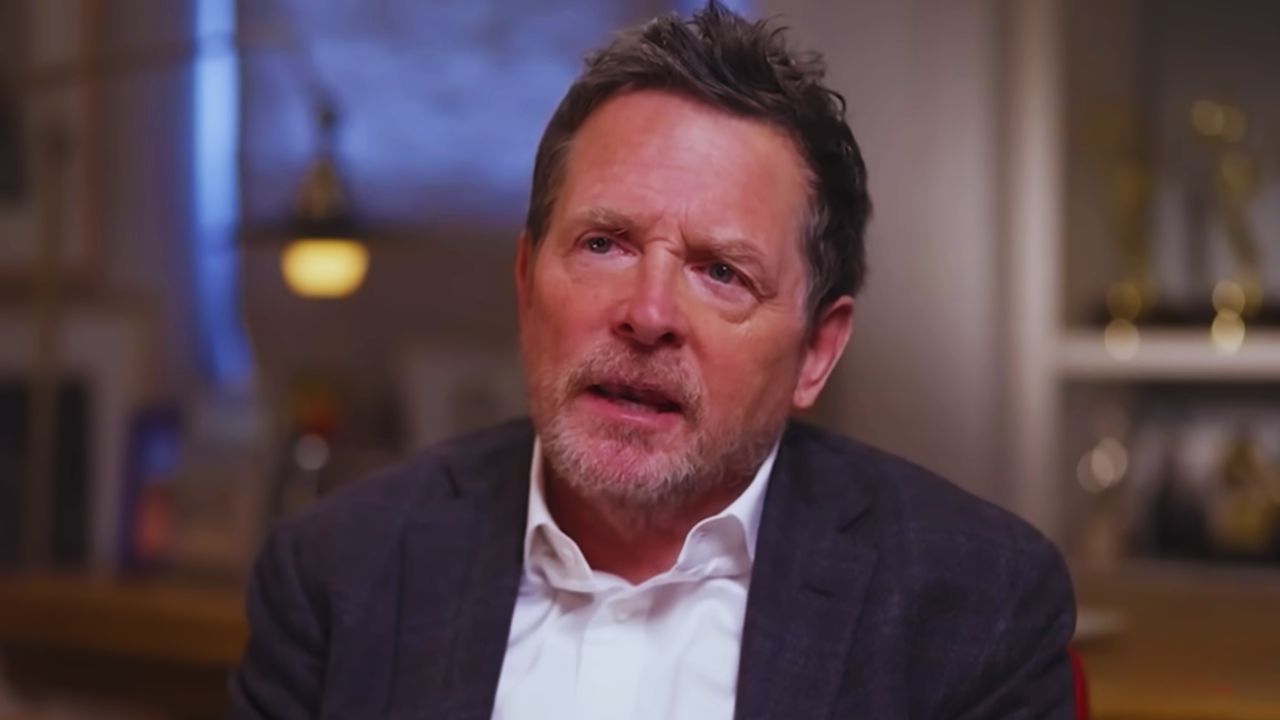Plumbing problems can drain more than your patience—they can empty your wallet, too. Some jobs, like fixing broken water pipes or replacing a sewer line, are shockingly pricey. If you’ve ever been hit with a hefty plumbing bill, you know the struggle is real.
Big plumbing projects often cost thousands of dollars due to labor and materials. For example, bathroom remodels and water heater installs top the list of expensive fixes. But don’t worry—there are ways to cut costs while keeping your home’s plumbing in great shape.
Want to save money on repairs without cutting corners? Keep reading for tips that actually work!
Most Expensive Plumbing Jobs
Big plumbing jobs can drain your wallet fast. Some tasks need heavy tools, skilled hands, and lots of time.
Sewer line replacement or repair
Sewer line repairs can burn a hole in your wallet. Fixing or replacing them costs between $3,000 and $25,000. Tree roots often cause damage by breaking into pipes. Old pipes may also collapse over time, leading to messy problems.
Labor adds up fast since digging is needed to reach the lines. Emergency jobs pile on extra charges due to higher hourly rates.
Some plumbers use cameras to find blockages or cracks in sewer pipes more quickly. This high-tech gear saves time but increases service fees. Materials like PVC and cast iron drive up plumbing costs too, as they’re not cheap.
Regular upkeep helps prevent major sewer disasters down the road. Skipping maintenance might lead straight into these costly repairs!
Bathroom or kitchen remodeling
Plumbing in bathroom or kitchen remodeling is pricey. It often involves moving water supply lines, sinks, and drains. Costs can range from $1,500 to $15,000, depending on the job size and materials.
Labor adds up fast with plumbers charging hourly rates between $45 and $200. Complex tasks like installing new pipes or fixtures increase expenses.
Issues like outdated plumbing systems make it even pricier. Using high-quality materials may cost more upfront but lowers future repair bills. To save money, compare quotes from different plumbers before hiring one.
Avoid rushing into decisions; plan the remodel carefully to reduce unnecessary overhead costs.
Water heater installation or replacement
Water heater jobs can drain your wallet fast. Replacing one may cost $600 to $3,500, depending on the size and type. Tankless models are pricier but save money long-term by cutting energy bills.
Plumbers usually charge an hourly rate between $45 and $200, plus a flat fee for installation.
Materials like pipes or valves add to the final price tag. Repairs might still be expensive if sediment buildup damages the tank or heating elements. To save cash, compare quotes from multiple plumbers online before deciding who does the job.
Regular maintenance also keeps surprise costs away!
Slab leak repairs
Slab leaks can drain your wallet fast. These leaks form under concrete floors, making repairs tricky and expensive. Costs often range from $500 to $4,000 depending on the damage and methods used.
Jackhammering through concrete or rerouting pipes adds to labor fees and overhead expenses.
A slab leak left unchecked is like a slow-burning fuse—it’ll blow up your budget.
Plumbers may charge an hourly rate of $45 to $200 for these jobs. Tools like electronic pipe locators also push prices higher. Catching these issues early can save money on major fixes later.
Factors That Make Plumbing Jobs Expensive
Plumbing jobs can cost a lot due to time, tools, and materials—find out why next!
Labor-intensive processes
Fixing sewer lines or slab leaks takes time. These jobs need digging, breaking through concrete, and using special tools. Sewer line repair often means removing sections of pipes underground, which adds heavy labor costs.
Hourly rates for plumbers range from $45 to $200 based on skills and the work’s difficulty. Slab leak fixes can cost thousands due to the need for precise equipment. Such processes involve cutting into materials like concrete floors—a task no one wants to rush!
Specialized equipment requirements
Some plumbing jobs need special tools. Sewer line repairs may require video cameras to find clogs or damage. Hydro-jetting tools clear tough blockages in pipes. Slab leaks often demand sonic listening devices to detect water under concrete.
Large jobs like kitchen remodeling might need pipe threading machines or soldering equipment. Specialized tools add costs due to their high prices and maintenance needs. Plumbers often include these overheads in hourly rates or flat rates charged for services.
Material costs
Plumbing materials can add up fast. Pipes, fittings, and fixtures like sinks or faucets often cost hundreds of dollars. For example, copper pipes are more expensive than PVC pipes but last longer.
A good-quality water heater might cost $500 to $3,000, depending on the size and type.
Cheap materials may save money upfront but wear out quicker. High-end options look nice but hit your wallet hard. Investing in durable parts saves repair costs later. Always check if plumbers charge for materials at retail prices or their own marked-up rates—this impacts the total bill greatly!
How to Save Money on Plumbing Jobs
Plumbing bills can add up fast, but there are smart ways to cut costs. A little effort and the right plan can keep your wallet happy!
Learn basic DIY repairs
Fixing simple plumbing problems can save money. It also helps avoid paying a service fee for small issues.
- Fix leaks. A dripping faucet wastes water and raises your bill. Use basic plumbing tools like a wrench to tighten loose parts.
- Clear clogs in drains. Try a plunger or a drain snake from the store. Avoid emergency plumber services by solving this on your own.
- Replace washers on faucets. Leaky faucets often just need new rubber washers, which cost less than $5.
- Unclog toilets using a plunger or hot water with dish soap. This stops you from paying hourly rates for simple fixes.
- Learn how to install new showerheads. You only need plumber’s tape and an adjustable wrench for this job.
- Repair running toilets by replacing flappers or adjusting the chain inside the tank. These parts are cheap at hardware stores.
- Watch online videos for other easy DIY repairs like tightening pipes or fixing small seals.
These tips help reduce plumbing costs, leaving more money in your pocket!
Schedule regular maintenance
Regular plumbing maintenance stops big problems. A small leak today can turn into costly slab repairs later. Check pipes, water heaters, and drains every few months. Hiring a plumber for inspections can cost between $45 and $200 per hour but saves more down the line.
Avoid emergencies by maintaining your system. Clean drains and watch for sluggish flow or odd noises. Replace worn-out parts before they break completely—small fixes beat large expenses! Simple upkeep boosts efficiency, cuts future plumbing costs, and protects your wallet from steep service fees.
Compare quotes from multiple plumbers
Call at least three plumbers before hiring. Compare their hourly rate, flat rates, and service fees. Some charge $45 an hour; others may ask for up to $200. Always confirm what the price includes—labor only or parts too? Ask about taxes and extra charges.
Check reviews online or through your network. Hiring based on cost alone might backfire if the quality is poor. A skilled journeyman plumber could save money by working faster with fewer mistakes.
Save cash upfront but avoid cutting corners on experience!
Invest in quality materials upfront
Cheap materials can cause big problems later. A low-cost pipe might leak after a year, leading to water damage and higher plumbing costs. High-quality tools and parts last longer and perform better, saving money over time.
For example, premium copper pipes resist corrosion better than cheaper PVC ones. Though they cost more upfront, you avoid frequent repairs. Spending wisely now lowers service fees and boosts your home’s value.
Takeaways
Plumbing costs can add up fast, but smart choices help. Big jobs like sewer repair or bathroom remodeling hit your wallet the hardest. Focus on learning simple fixes to cut costs. Shop around for fair hourly rates and avoid surprise bills by comparing quotes early.
Regular check-ups for leaks or clogs save you cash long-term too. High-quality tools or materials may cost more upfront but pay off over time. Need work done soon? Start with these tips today! A little planning makes a huge difference in both stress and spending.
FAQs
1. What are the most expensive plumbing jobs?
Fixing sewer lines, replacing water heaters, and repairing burst pipes often top the list of costly plumbing jobs. These tasks require special plumbing tools and can take hours or even days to complete.
2. Why do plumbers charge high service fees?
Plumbers charge a service fee to cover their travel time, expertise, and use of professional tools. This fee also contributes to their net profit margin since many costs like equipment and labor reduce overall earnings.
3. Can DIY plumbing save money on repairs?
Yes, DIY plumbing can save you money on minor fixes like unclogging drains or tightening fittings. However, for complex problems involving flat rates or hourly rate charges from professionals, it’s better to hire an expert to avoid bigger issues later.
4. How can I lower my overall plumbing costs?
Compare quotes online before hiring someone. Ask about flat rates instead of hourly billing when possible—this helps control expenses—and try handling simple repairs yourself with basic information found on the internet!











































